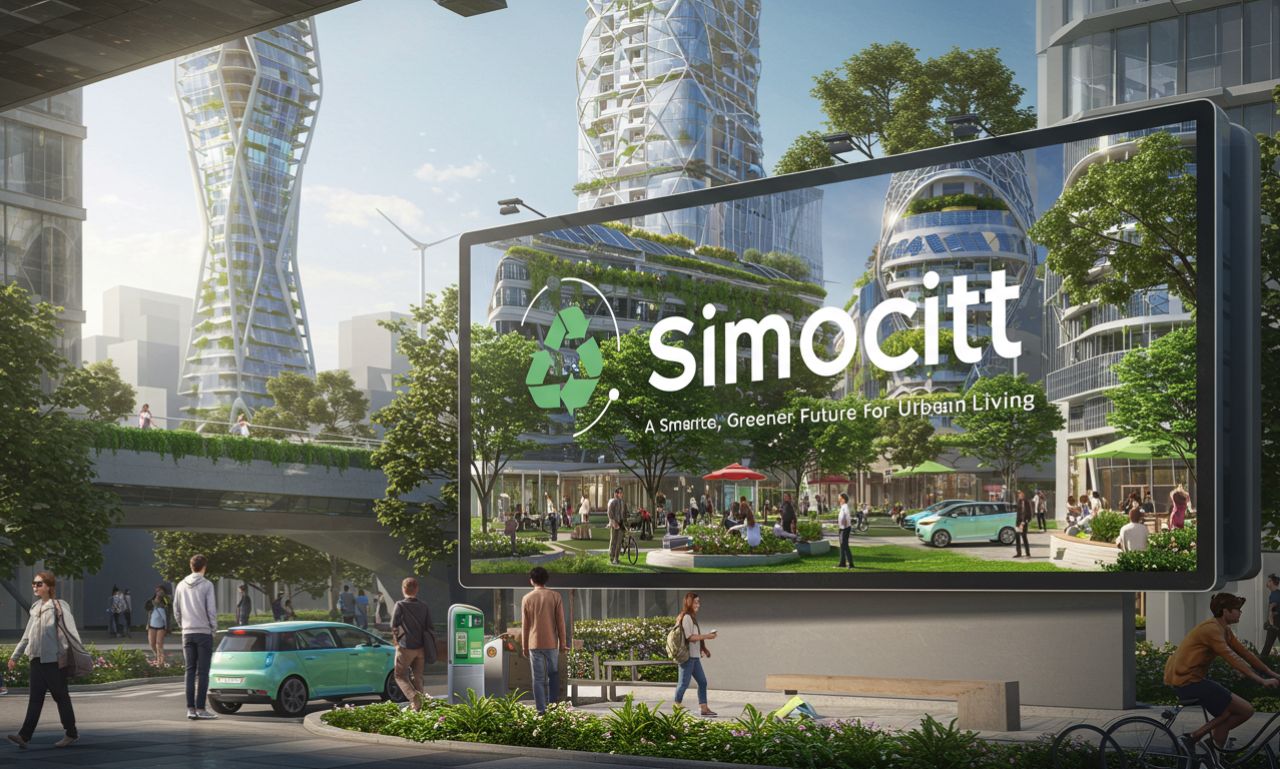In a world where cities are expanding faster than ever, innovation in urban design has become more than a luxury—it’s a necessity. Simpcitt, an emerging concept in smart city development, is reshaping the way we imagine urban spaces. It blends technology, sustainability, and citizen participation to create cities that are not just efficient but also livable and inclusive.
Simpcitt symbolizes the next generation of smart urban ecosystems, focusing on simplicity, connectivity, and environmental responsibility. From smart infrastructure and renewable energy to digital governance and real-time analytics, Simpcitt integrates these systems into a seamless urban experience.
This article explores what Simpcitt is, how it works, and why it may represent the future of intelligent, people-centered urban living.
Understanding Simpcitt
At its core, Simpcitt can be described as a “simplified smart city” model designed for the 21st century. While traditional smart cities focus heavily on digital technologies and data collection, Simpcitt brings a more balanced approach—merging innovation with humanity.
The term combines “Simple” and “City,” highlighting its mission to make complex urban systems easier to manage, more sustainable, and more adaptable. Unlike rigid city planning, Simpcitt emphasizes flexibility. It’s designed to evolve with society’s changing needs while reducing waste, emissions, and inequality.
In essence, Simpcitt reimagines how people interact with their environment—using data and design to improve the quality of everyday life.
The Vision Behind Simpcitt
The vision of Simpcitt is ambitious yet grounded: to create connected, resilient, and inclusive urban environments that empower communities. It’s built on five foundational pillars that define its philosophy:
-
Simplicity – making urban systems intuitive and accessible.
-
Sustainability – integrating renewable energy, green infrastructure, and eco-friendly practices.
-
Connectivity – ensuring seamless communication between devices, systems, and people.
-
Transparency – promoting open governance and public participation.
-
Adaptability – allowing urban infrastructure to adjust to real-time challenges.
This approach positions Simpcitt as a living city—a dynamic ecosystem that learns and grows with its citizens.
Key Features of Simpcitt
Smart Infrastructure
At the heart of Simpcitt lies a robust network of sensors and Internet of Things (IoT) devices that monitor traffic, lighting, air quality, and energy usage. This data-driven infrastructure enables the city to make automatic adjustments—for instance, dimming streetlights when no one is around or optimizing traffic signals based on congestion.
Clean Energy Integration
Simpcitt promotes a clean energy ecosystem built on solar, wind, and battery storage. Its power grid is decentralized, allowing neighborhoods to share energy through microgrids. By minimizing reliance on fossil fuels, Simpcitt reduces carbon emissions while ensuring reliable power supply.
Intelligent Transportation
Forget traffic jams and pollution-heavy commutes. Simpcitt integrates AI-based public transit, electric vehicle networks, and smart mobility apps. Citizens can check real-time bus schedules, rent e-bikes, or summon autonomous shuttles from a single digital interface.
Digital Governance
Transparency is one of Simpcitt’s most transformative aspects. Using blockchain-based governance tools, residents can vote on local policies, track budget allocations, and propose community initiatives. The goal is to bring democracy closer to daily life through technology.
Green Architecture
Simpcitt encourages eco-friendly construction—think vertical gardens, energy-efficient buildings, and water-harvesting systems. By combining architectural innovation with sustainability, it creates a visual and environmental harmony that traditional cities often lack.
How Simpcitt Improves Urban Life
The beauty of Simpcitt lies in its human-centered design. Instead of using technology to control people, it uses it to enhance daily life.
Imagine a city where your building’s solar panels power nearby streetlights, or where waste bins signal collection services when full. Traffic congestion becomes minimal because AI continuously optimizes road usage. Healthcare services predict patient needs based on public health data, and schools adjust learning schedules using real-time analytics.
Simpcitt isn’t about gadgets—it’s about creating a healthier, happier, and more connected society.
The Role of Artificial Intelligence in Simpcitt
Artificial intelligence acts as the brain of Simpcitt. It processes data from millions of devices to improve decision-making across every sector—transportation, energy, safety, and healthcare.
AI’s predictive capabilities allow the city to anticipate problems before they happen. For instance, by analyzing weather patterns, Simpcitt can activate flood barriers in advance or reroute power during heatwaves to prevent outages.
In governance, AI helps manage resources efficiently, reducing bureaucracy and waste. It empowers human decision-makers rather than replacing them, ensuring a balance between automation and empathy.
Sustainability at the Heart of Simpcitt
What sets Simpcitt apart is its deep commitment to environmental stewardship. The entire ecosystem is built around carbon neutrality and waste reduction.
Green corridors filled with plants help purify air and reduce heat. Buildings are designed for maximum natural light, lowering energy use. Water systems recycle greywater for irrigation, and AI monitors environmental impact to maintain ecological balance.
Every component of Simpcitt contributes to its mission of creating self-sustaining cities that respect the planet.
Citizen Participation and Community Building
Unlike traditional city models, where decisions come from the top down, Simpcitt promotes bottom-up engagement. Residents can log into digital platforms to provide feedback, suggest improvements, or track ongoing projects.
Community collaboration is encouraged through local apps that connect neighbors for volunteering, sharing resources, or co-managing neighborhood spaces. The city becomes a collective project—built not just by planners and engineers but by its people.
This inclusive participation creates stronger communities and ensures that technology serves real human needs, not just efficiency metrics.
Challenges and Limitations of Simpcitt
Of course, Simpcitt’s vision doesn’t come without obstacles. Implementing a concept this advanced raises real-world concerns:
-
High Development Costs: Building such infrastructure requires large-scale investment and government commitment.
-
Data Privacy Issues: Continuous data collection can raise fears of surveillance if not managed transparently.
-
Technical Complexity: Integrating multiple systems demands interoperability and strong cybersecurity.
-
Public Trust: Citizens must feel confident that their data and voices are being respected.
-
Equity and Accessibility: Ensuring equal access to smart services for all social groups remains a priority.
Overcoming these challenges requires collaboration between governments, tech companies, and communities—ensuring innovation doesn’t outpace inclusion.
The Economic Impact of Simpcitt
Beyond livability, Simpcitt offers significant economic opportunities. The ecosystem encourages startups focused on sustainability, AI, clean energy, and mobility. Local innovation hubs attract investment, generating jobs in both tech and green industries.
By promoting efficiency and renewable energy, Simpcitt also reduces operational costs for governments and businesses. In time, these savings can be reinvested in education, healthcare, and infrastructure, creating a self-reinforcing cycle of growth and innovation.
Global Influence and Future Potential
Simpcitt is not a single city—it’s a global model adaptable to different geographies. Smaller communities can adopt certain modules, such as energy management or digital governance, before scaling up.
In the coming decade, as climate change intensifies and urban populations surge, the Simpcitt framework may serve as a blueprint for sustainable expansion. With AI, renewable power, and ethical data use, it could reshape how future cities function.
Simpcitt’s flexibility also means it can evolve with emerging technologies—quantum computing, green hydrogen, or advanced robotics—ensuring long-term relevance.
Building Simpcitt: A Step-by-Step Path
Cities or developers looking to bring Simpcitt to life can start small:
-
Launch Smart Zones: Introduce IoT-based lighting, water, or traffic systems.
-
Adopt Renewable Microgrids: Transition energy systems to solar and battery models.
-
Implement Digital Governance: Build online platforms for community decision-making.
-
Upgrade Public Mobility: Invest in electric and shared transport.
-
Encourage Green Architecture: Offer incentives for sustainable building designs.
-
Foster Partnerships: Collaborate with local universities, tech firms, and NGOs.
-
Educate the Public: Host workshops on data privacy and sustainability.
With gradual implementation, cities can achieve the Simpcitt standard without overwhelming infrastructure or budgets.
The Social and Ethical Promise of Simpcitt
Technology should unite people, not divide them. That belief is central to Simpcitt’s ethos. By emphasizing ethics and empathy, it encourages cities to use data responsibly and inclusively.
AI models are open-source, ensuring fairness. Decision-making processes are visible to the public. The city becomes accountable to its citizens—not the other way around.
This vision of transparency and inclusivity ensures Simpcitt remains a city built by people, for people, powered by technology but guided by humanity.
Conclusion
Simpcitt represents more than a futuristic idea—it’s a necessary evolution in how we design and live in cities. By integrating sustainability, data intelligence, and civic participation, it lays the groundwork for a future where cities aren’t just smart—they’re alive, responsive, and compassionate.
If humanity hopes to balance progress with preservation, the Simpcitt philosophy offers a roadmap. It redefines growth not by how much we build, but by how wisely we live.

